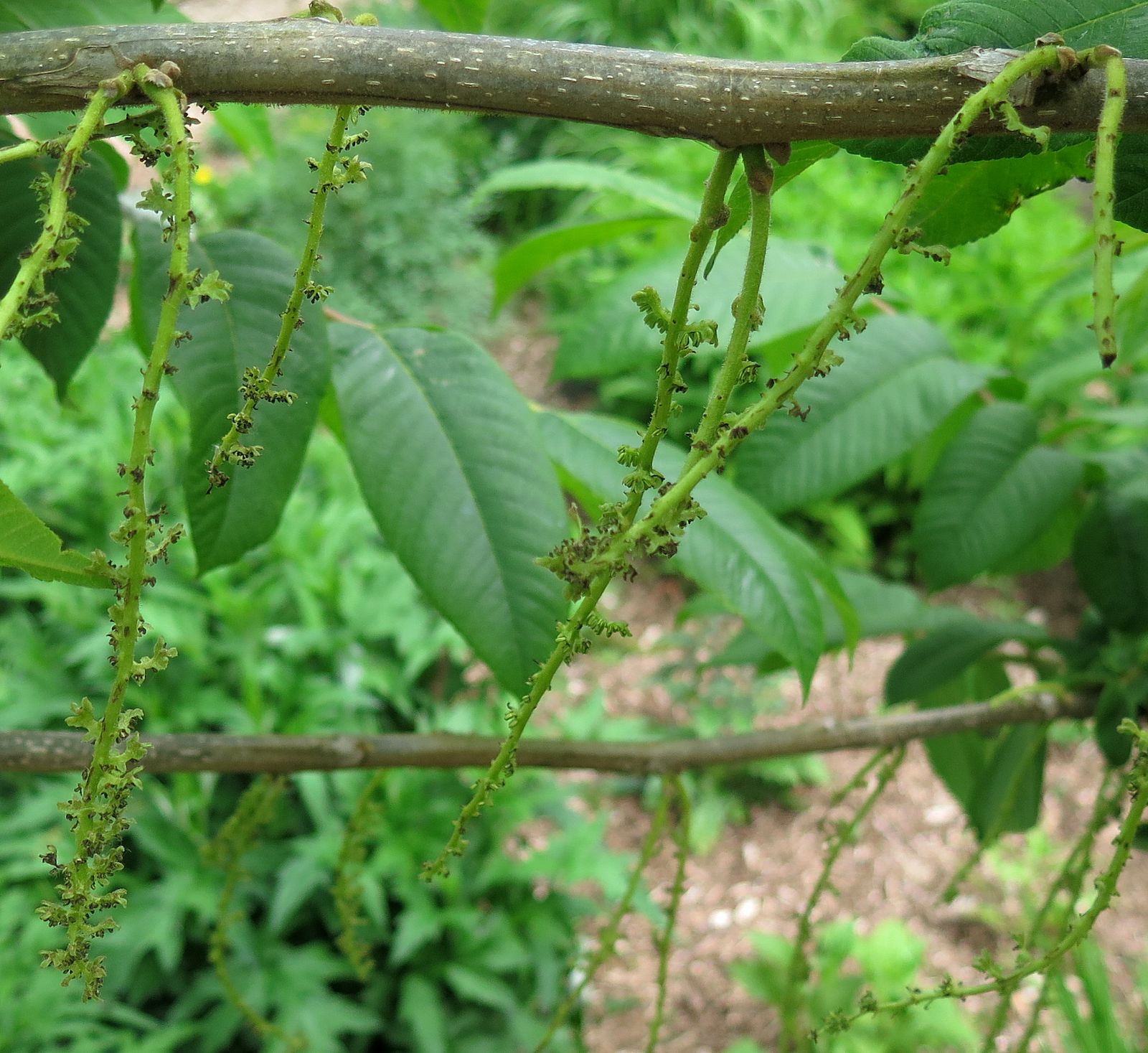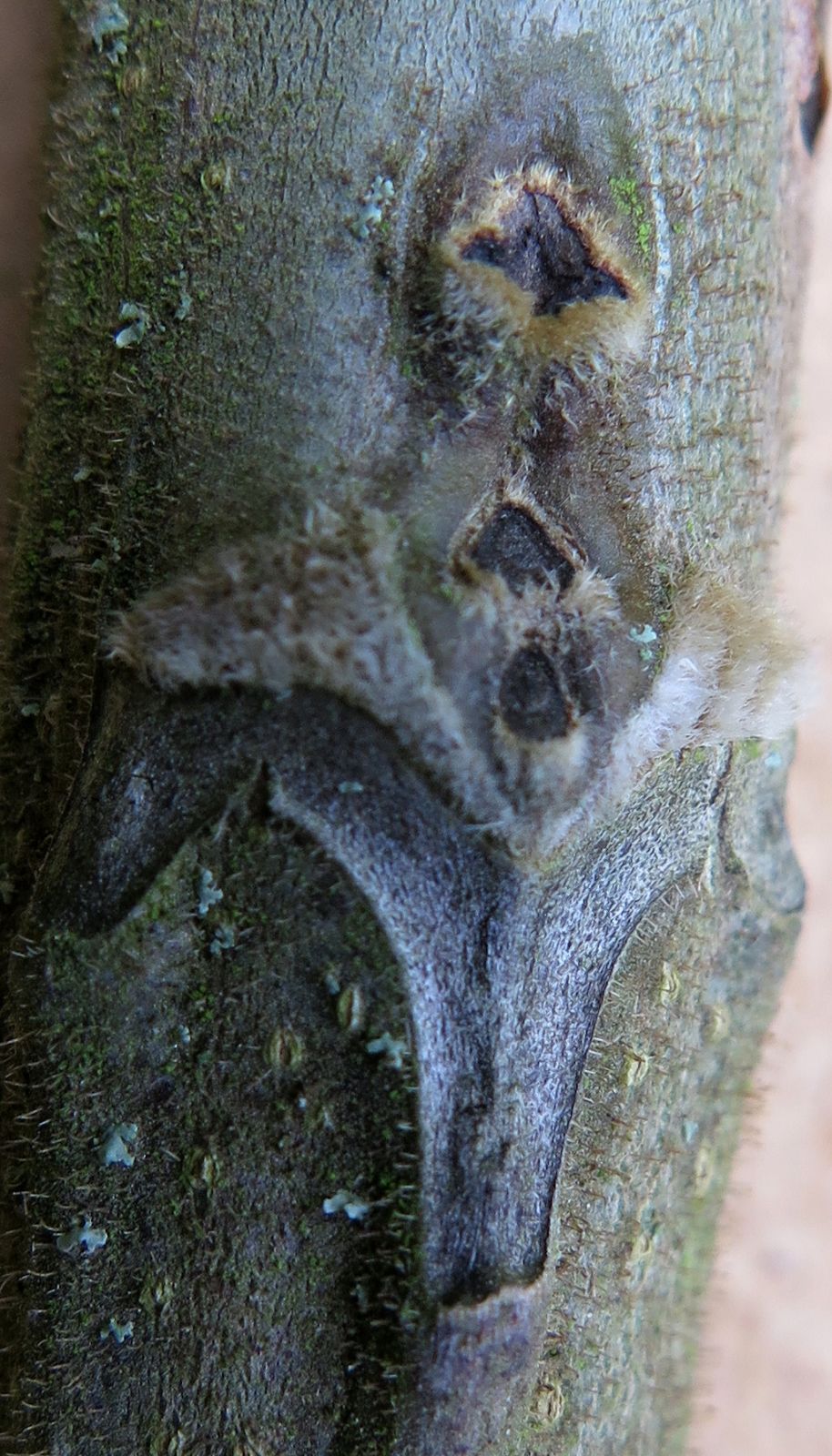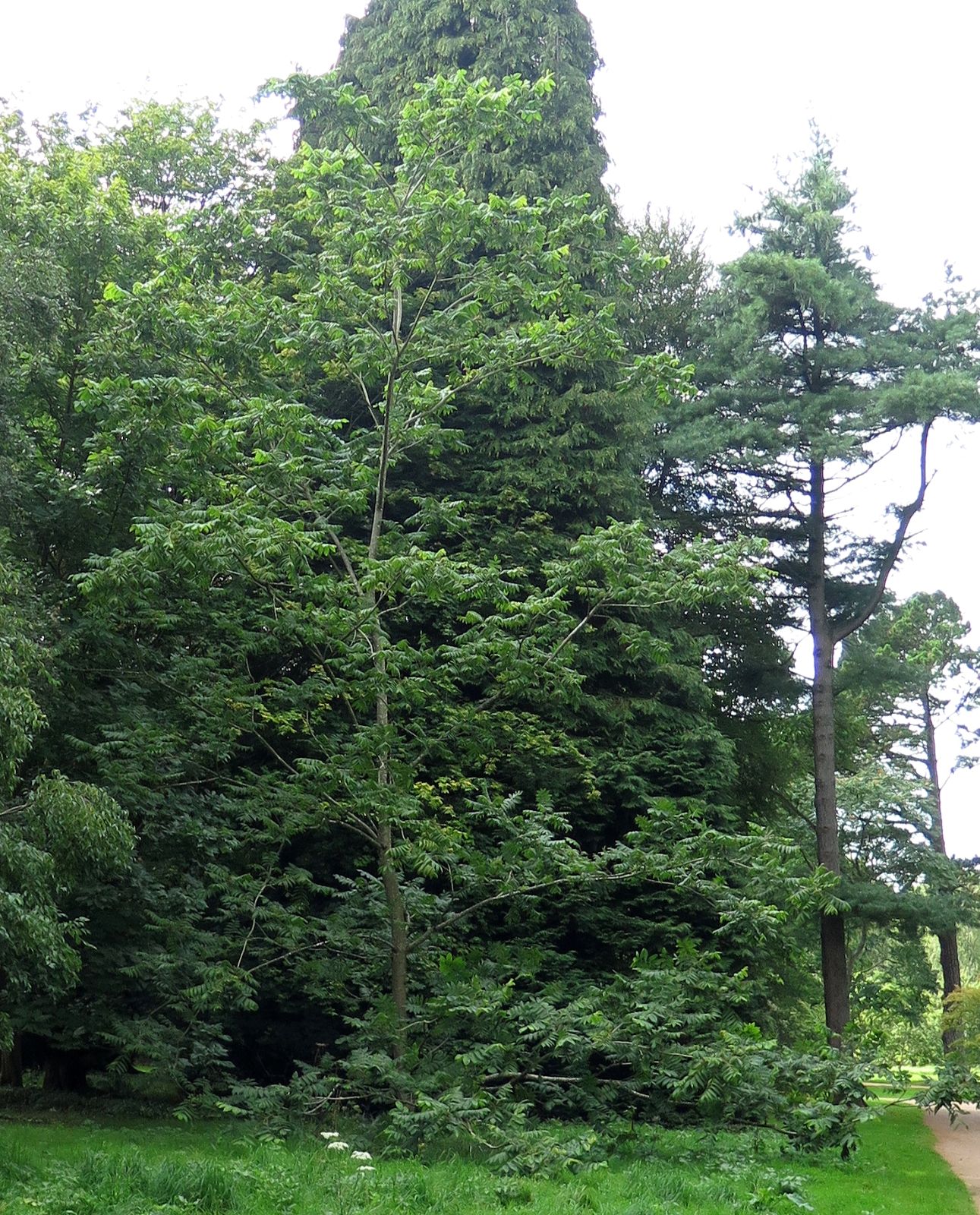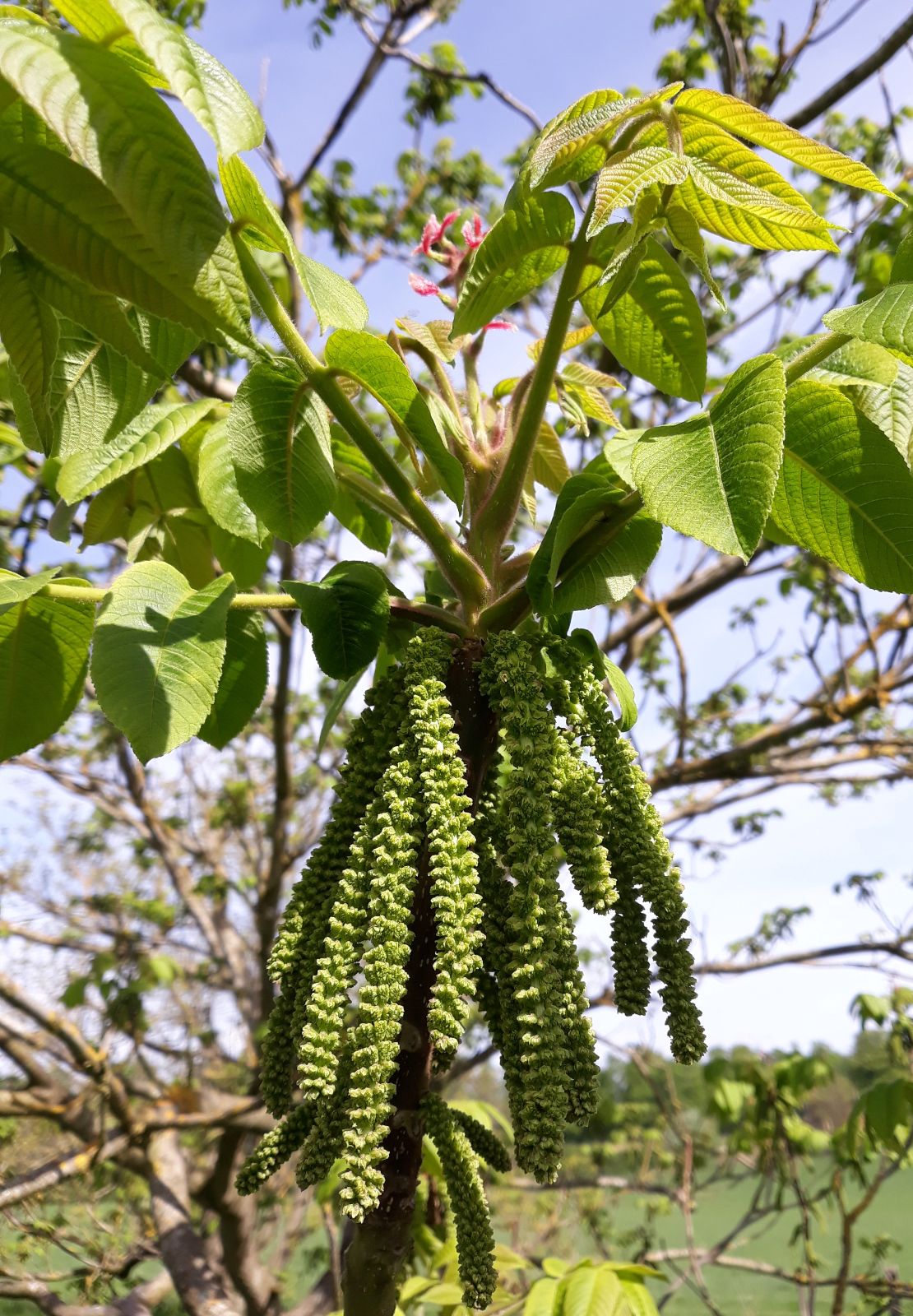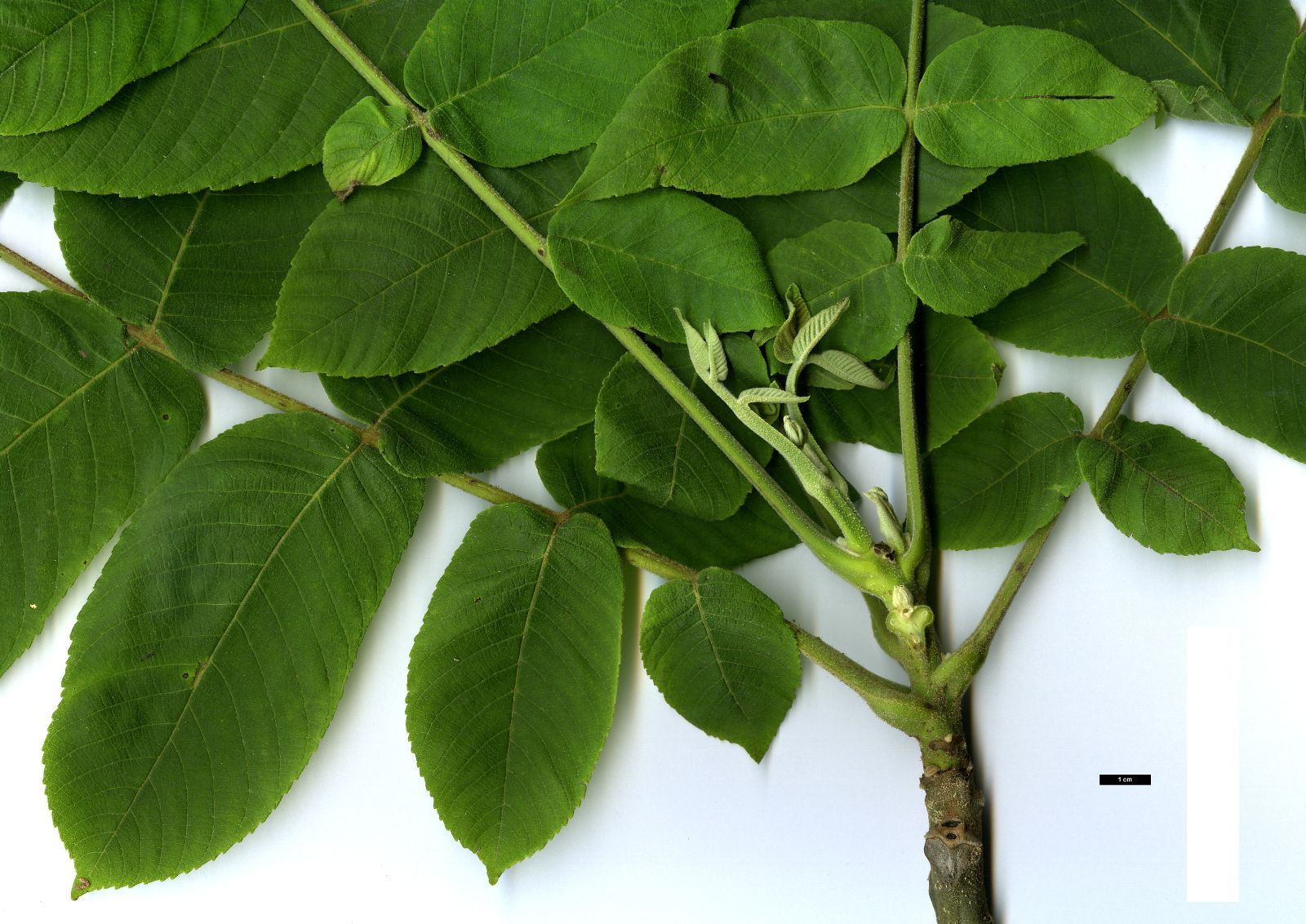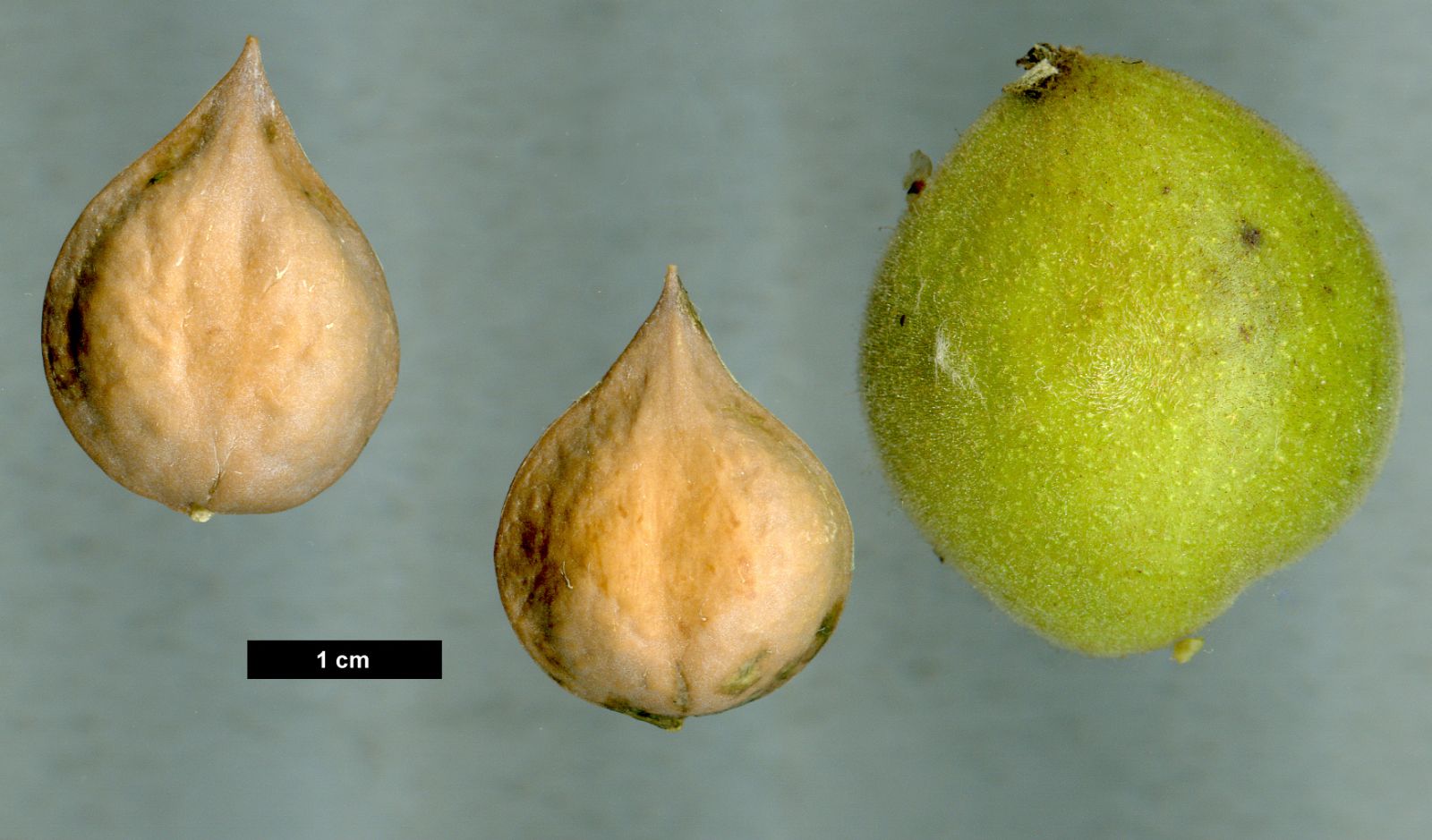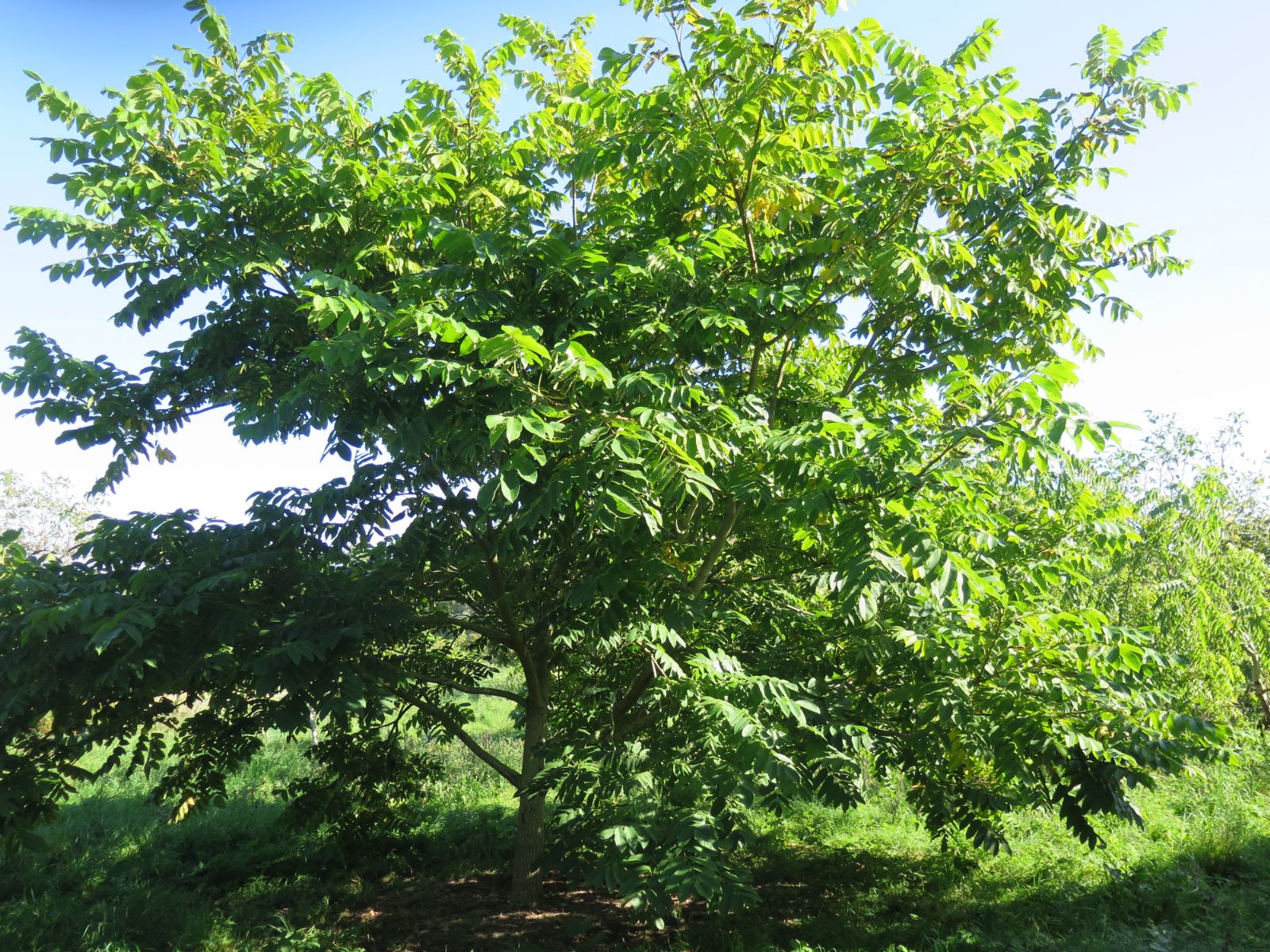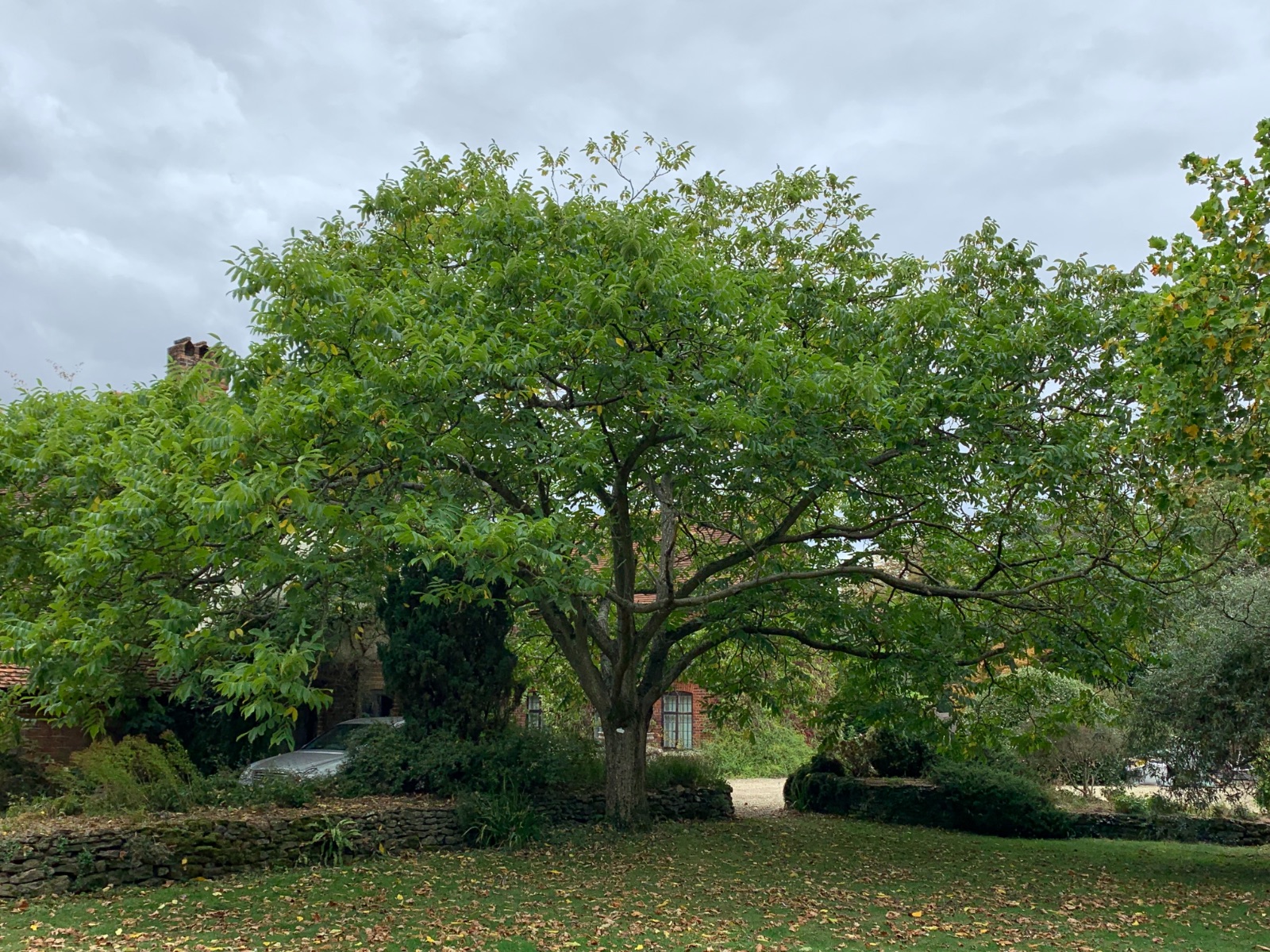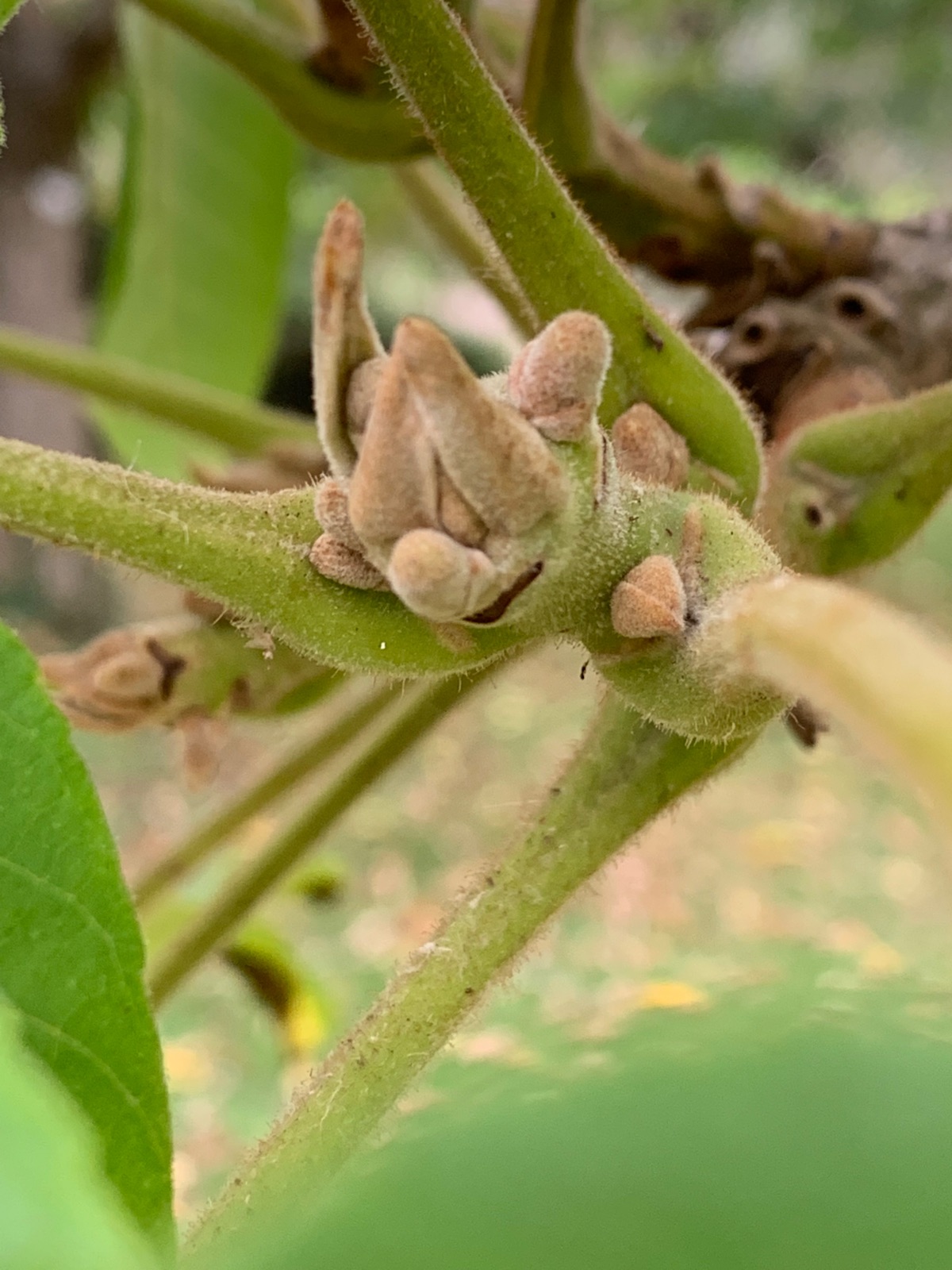Juglans mandshurica
Sponsor
Kindly sponsored by
a member of the International Dendrology Society
Credits
Julian Sutton (2019)
Recommended citation
Sutton, J. (2019), 'Juglans mandshurica' from the website Trees and Shrubs Online (treesandshrubsonline.
Genus
Common Names
- White Walnut
- Manchurian Walnut
- Chinese Walnut
- hu tao qiu
Synonyms
- Juglans cathayensis Dode
- Juglans stenocarpa Maxim.
Infraspecifics
Other taxa in genus
- Juglans ailantifolia
- Juglans × bixbyi
- Juglans californica
- Juglans cinerea
- Juglans cinerea × mandshurica
- Juglans hindsii
- Juglans hirsuta
- Juglans × intermedia
- Juglans major
- Juglans mandshurica × regia
- Juglans Mexican Species
- Juglans microcarpa
- Juglans mollis
- Juglans nigra
- Juglans × notha
- Juglans olanchana
- Juglans Paradox hybrids
- Juglans pyriformis
- Juglans × quadrangulata
- Juglans regia
- Juglans sigillata
- Juglans × sinensis
- Juglans steyermarkii
Large tree or sometimes – especially in cultivation – a shrub, to 25 m. Bark silvery-grey when young, becoming pale greenish-grey and deeply furrowed with age. Branchlets glandular-pubescent at first, with russet hairs. Leaf scars variable but usually three-pointed. Leaves 40–90 cm (potentially even longer in vigorous young trees); petiole 5–23 cm; petiole and rachis at least sparsely glandular pubescent, occasionally densely so. Leaflets (7 –) 9–19, lateral ones sessile, terminal leaflet with 1–5 cm petiolule; blade elliptic to ovate-elliptic or long elliptic-lanceolate, 6–17 × 2–7.5 cm, tomentose or occasionally slightly pubescent beneath, midrib pubescent; base subcordate, usually unequal; apex acuminate; margin serrate to serrulate. Male catkins 9–40 cm, pendulous, slender, yellow-green, flowers with 12–40 stamens. Fruits 5–10(–13) on a pendulous spike, more or less ovoid, 3–7.5 × 3–5 cm; husk densely glandular pubescent, indehiscent. Nut oval-oblong, 3–4 cm long, usually with a sharp tip; shell thick, rough, with (4–) 6–8 prominent ridges and deep pits and depressions. Flowering April–May, fruit August–October (China). (Bean 1981; Lu et al.1999; Grimshaw 2004).
Distribution China Anhui, Fujian, Gansu, Guangxi, Guizhou, Heilongjiang, Henan, Hubei, Hunan, Jiangsu, Jiangxi, Jilin, Liaoning, Shaanxi, Shanxi, Sichuan, Yunnan, Zhejiang provinces. Japan Hokkaido, Honshu, Kyushu, Shikoku (var. sachalinensis and var. cordiformis). North Korea Russia Far south east of Siberia; (Sakhalin, Kuril Islands - var. sachalinensis).. Taiwan
Habitat Mixed forests on mountain slopes or in valleys; 500–2800 m.
USDA Hardiness Zone 5
RHS Hardiness Rating H6
Conservation status Not evaluated (NE)
Juglans mandshurica is a variable tree species with a wide distribution in northeastern Asia. All its forms are valuable in cultivation for their pinnate leaves, which are very large and striking, especially on young and vigorously growing shoots, which are also thickly hairy, especially earlier in the season. Some forms are grown for their nuts. A number of taxa often seen in collections under other names (J. ailantifolia, J. cathayensis, J. cordiformis) are included here at various ranks.
It is no surprise that a variable, widely distributed species with a long history of cultivation should have acquired a confusing set of names. J. mandshurica as first described (Maximovic 1856) comprised mainland populations south to northern China. More southerly Chinese plants were referred to Dode’s later J. cathayensis, characterised by hairier undersides to the leaflets and more fruits per spike. However, Flora of China (Lu et al. 1999) treats that species as a synonym of J. mandshurica; we follow this here. Island populations, from Japan and Siberian islands have usually been labelled J. ailantifolia. However, this is itself a very variable taxon (Ohwi 1965) and it is almost impossible to pin down reliable differentiating characters; we follow the new Flora of Japan (Iwatsuki 1993) in treating it as no more than a geographical variety, J. m. var. sachalinensis. The Heartnut of Japan, with its flattened, thin-shelled nuts is probably a horticultural variant; sometimes treated as a species in its own right or as a variety of J. ailantifolia, we again follow Flora of Japan by placing it in J. m. var. cordiformis. With these two varieties recognised, the name J. m. var. mandshurica automatically becomes available to use for the remaining mainland forms. The name J. hopeiensis is sometimes thrown into this mix; it refers to the Wenwan Walnut of China, which appears to be of ancient hybrid origin, and is discussed under J. regia. Shu et al. (2016) looked for genetic evidence of introgressive hybridisation between wild J. regia and J. mandshurica at three sites in Hubei: such evidence was present, but rare, even amongst apparently intermediate individuals.
Adding to the confusion, this species seems to invite spelling mistakes: ‘ailantifolia’ is very often rendered ‘ailanthifolia’, while ‘mandshurica’ is sometimes rendered ‘mandschurica’ or ‘mandschaurica’. Examination of the original descriptions shows that these are merely errors.
The Chinese Walnut is an important constituent of various types forest. Plant collectors have noted its shade-intolerant seedlings growing in thickets of regenerating vegetation (Grimshaw 2004). In cultivation, the shelter of a tree cage encourages specimens to break away from a shrubby habit to produce standard specimens (T. Kirkham in Grimshaw 2004) – once this has been achieved, the tree will grow away quickly. Ernest Wilson, who collected it quite widely, noted ‘usually it is a bush, but in moist woods it forms a tree from 12–15 m tall’ (Sargent 1917). Young specimens can produce immensely long leaves on fast-elongating branches to give an open, sometimes gawky habit. Combined with the densely hairy young stems and leaves, this can give the impression of some Rhus species. Its growth pattern is well suited to colonising three-dimensional space quickly and, in plant resource terms, cheaply, in the competitive environment of regenerating forest.
Chinese material in cultivation is dominated by southerly collections, often labelled J. cathayensis. Wilson introduced it under that name in 1903, sending seed to the Veitch Nursery in the United Kingdom (Bean 1981), and then several more times from 1907 onwards to the Arnold Arboretum, Wilson 371 of 1907–1908 covering material from several southern provinces (Sargent 1917).
There are several old specimens, probably from Wilson material, in England (The Tree Register 2019). These can be seen at Kew (planted 1906, 14 m × 49 cm in 2010), at Hergest Croft, Herefordshire (planted 1912, 15 m × 67 cm in 2013) and outside the publicly accessible area of Borde Hill, Sussex (planted 1911, 12 m × 26 cm in 1995). Much younger trees in more favourable sites may be much bigger, for example a tree in the walnut collection at Canford School, Wimborne, Dorset (planted 1961, 19 m × 663 cm in 2017).
More northerly material has in the past been considered less satisfactory in British cultivation (Bean 1981). Nonetheless, respectable trees of more recent introduction are beginning to make their presence felt, for example a specimen of Siberian provenance at Ness Gardens, Cheshire (planted 1990, 11 m × 28 cm in 2016 (The Tree Register 2019).
These northern trees come into their own in northern Europe. Several older specimens are recorded from the Low Countries east to Latvia, notably a 28 m tree in the Gutspark, Destedt, northern Germany (monumentaltrees.com 2019). Large trees can be seen at the Arboretum Mustila, southern Finland, grown from seed bought from the Harbin-based Russian seed merchant Ptitsin in the 1930s (Arboretum Mustila 2019). It is considered the hardiest walnut in Finland.
The Manchurian Walnut from mainland Asia is very rarely grown in North America (Jacobson 1996), even though northern forms might seem highly suitable for colder maritime areas (Japanese material is much more frequent). Specimens are recorded at the Morton Arboretum, Illinois; the Arnold Arboretum, Massachusetts; the US National Arboretum, Washington, DC; and the University of British Columbia Botanic Garden, Vancouver (Morton Arboretum 2019; Arnold Arboretum 2019; US National Arboretum 2019; University of British Columbia 2019).
'Grimo Manchurian'
In effect a Heartnut cultivar, but thought to be a hybrid between J. mandshurica var. cordiformis and the mainland var. mandshurica. It is self-fertile with good yields of medium-sized nuts, which crack well. Introduced by the Grimo Nut Nursery, Ontario (De Smallekamp 2015; Crawford 2016).
var. cordiformis (Makino) Kitam.
Common Names
Heartnut
Synonyms
Juglans cordiformis Maxim. (1872) non J. cordiformis Wangenh. (1787)
Juglans ailantifolia var. cordiformis (Maxim.) Rehd.
Distribution
- Japan – Probably of cultivated origin and not truly wild.
RHS Hardiness Rating: H6
USDA Hardiness Zone: 6
The Heartnut is distinguished by the shape of the nuts, flattened and heart-shaped, rather than pointed at both ends. The shell is relatively thin (the emphasis being on ‘relatively’), with a rather smooth shell.
Long cultivated in Japanese orchards (Goodell 1984) and unknown as a truly wild plant, this is a popular nut tree in the Great Lakes region (Society of Ontario Nut Growers 2013) and seems particularly well suited to temperate maritime regions (for example British Columbia or the United Kingdom) with reasonable amounts of summer rainfall (Crawford 2016). As with most walnuts, individuals tend to be either protandrous or protogynous. Heartnut cultivars are capable of a degree of self pollination, but growing protandrous and protogynous varieties together is ideal (Society of Ontario Nut Growers 2013). Hybrids with J. cinerea exist, and are known as buartnuts.
Japanese-bred Heartnut selections do not seem to be available in Europe or America, all the obtainable cultivars originating in Canada or the northern United States. A small selection of the most widely available and recommended 20th century cultivars is given here; for further information see Society of Ontario Nut Growers (2013); Crawford (2016). Note that nurseries may offer both grafted and somewhat variable seedling trees from a given variety (Agroforestry Research Trust 2019).
var. sachalinensis (Komatsu) Kitam.
Common Names
Japanese Walnut
Onigurumi
Synonyms
Juglans ailantifolia Carr.
Juglans sachalinensis Komatsu
Juglans sieboldiana Maxim., nom. illeg.
Juglans mandshurica var. sieboldiana Makino, nom. inval.
Juglans mandshurica f. sieboldiana (Makino), M. Kim, nom. inval.
Distribution
- Japan – Hokkaido, Honshu, Kyushu, Shikoku.
- Russia – Sakhalin, Kuril Islands.
RHS Hardiness Rating: H6
USDA Hardiness Zone: 6
This is a geographical variety, native to Japan and Siberian islands, almost always labelled J. ailantifolia in collections. Very variable (Ohwi 1965), it is difficult to distinguish with certainty in the absence of wild provenance, and there should be no shame in labelling uncertain examples simply as J. mandshurica. Bean (1981) distinguished it by the smoother nut with a more prominent ridge where the two halves join (not always a character of much practical use), and by the more abruptly, shorter-pointed leaflets. Grimshaw (2004), while admitting the difficulties, tentatively suggested that at least in British arboreta material of var. sachalinensis (not necessarily representative of wild variation) the leaflets tend to be inserted on the rachis at about 45° rather than nearer 90° in mainland forms. However, leaf form can vary considerably within a single tree and the credulous could reach different conclusions depending on the leaf chosen.
In cultivation it makes a luxuriantly leafy tree, and seems to suit maritime climates well. While nut production is too scant to be commercially useful in the United Kingdom, it seeds about freely and could, like Pterocarya × rehderiana, become an arboretum weed. At the Yorkshire Arboretum, John Grimshaw (pers. comm. 2019) comments that ‘if we stopped mowing we’d have a wood of them in no time’.
Phillip von Siebold sent Japanese seed to Leiden around 1860 (Elwes & Henry 1906–1913), although Jacobson (1996) suggests that it was in Europe by 1852 and North America by 1860. In Europe, venerable specimens are few, and this may not be a particularly long-lived species. One exception is a 19th century tree at Belgrove, the former garden of William Gumbleton at Cobh on the south coast of Ireland. Mentioned by Elwes & Henry 1906–1913 as being 7 m tall in 1903, it was measured at 15 m × 169 cm in 2010 (The Tree Register 2019). A fine tall specimen grows in Headington Hill Park, Oxford (21 m × 110 cm, 2014) although cautious comments in The Tree Register about this and other examples highlight identification issues.
Several specimens are recorded in collections across The Netherlands and northern Germany, notably a straight, single trunked tree (16.5 m, 2018) in the Schlosspark Sanssouci, Potsdam (monumentaltrees.com 2019). Unlike mainland forms, var. sachalinensis is quite commonly grown in the northern United States (Jacobson 1996) and is represented in major arboreta in the northeast, the Great Lakes area and the Pacific Northwest.


